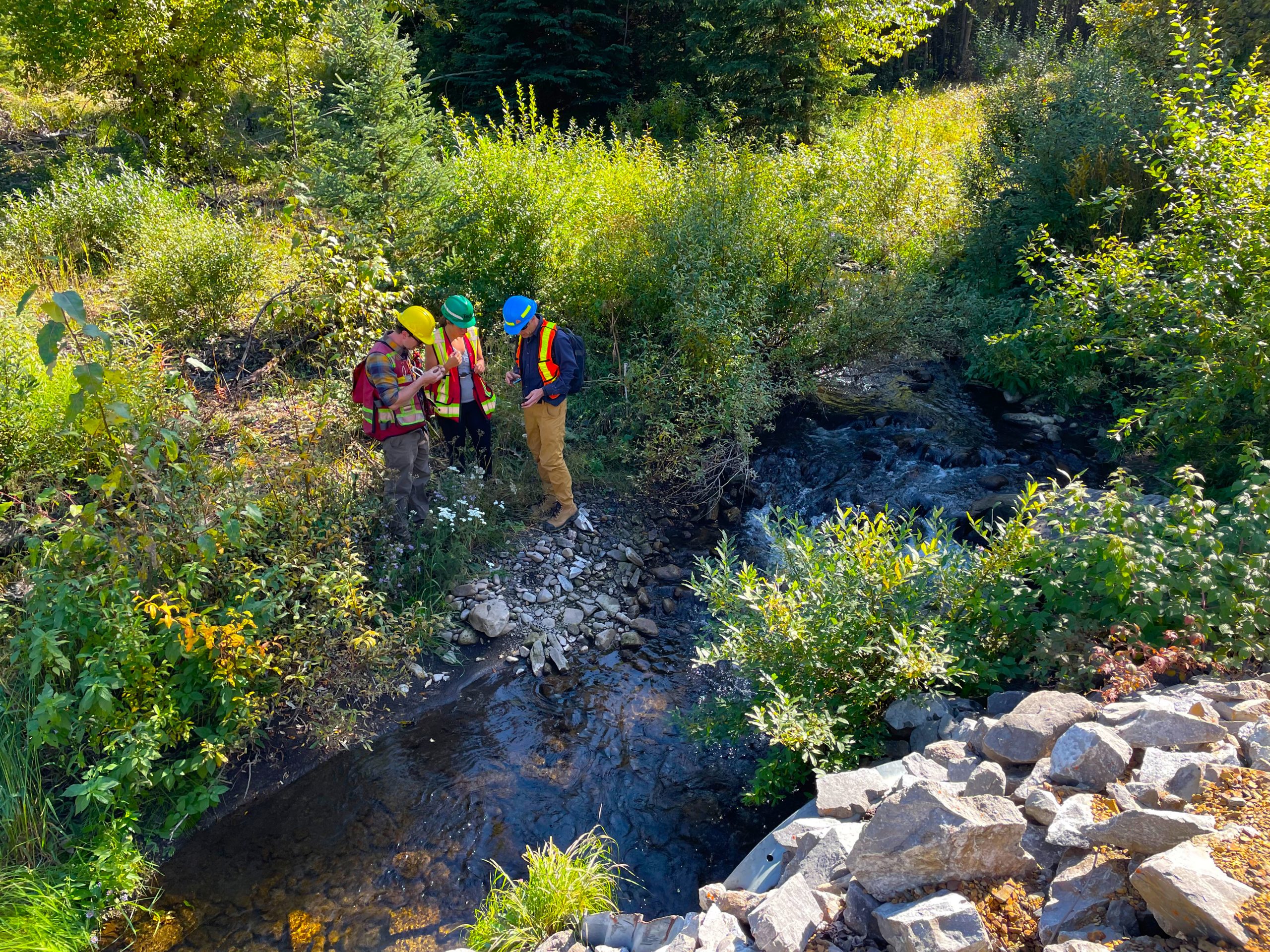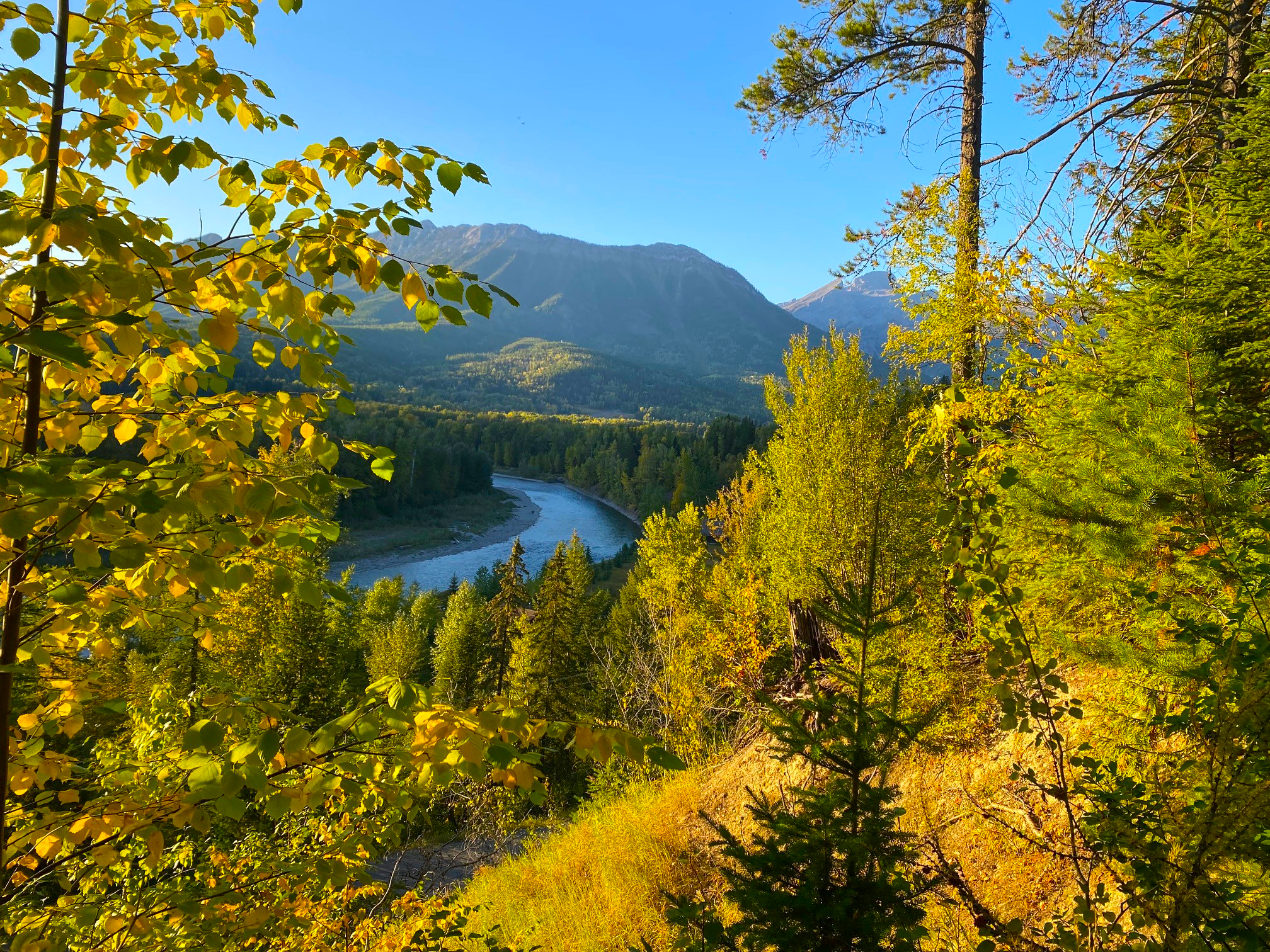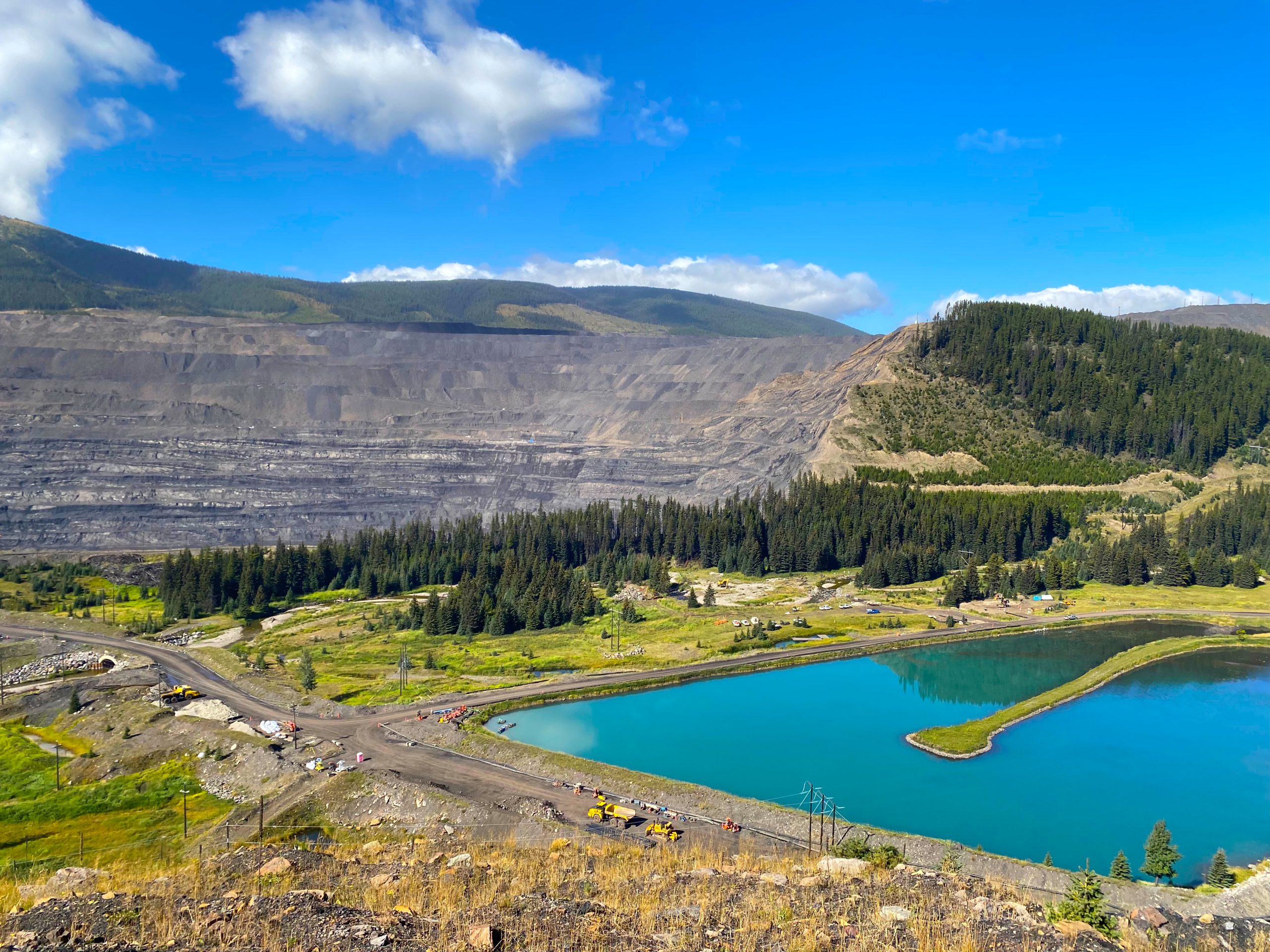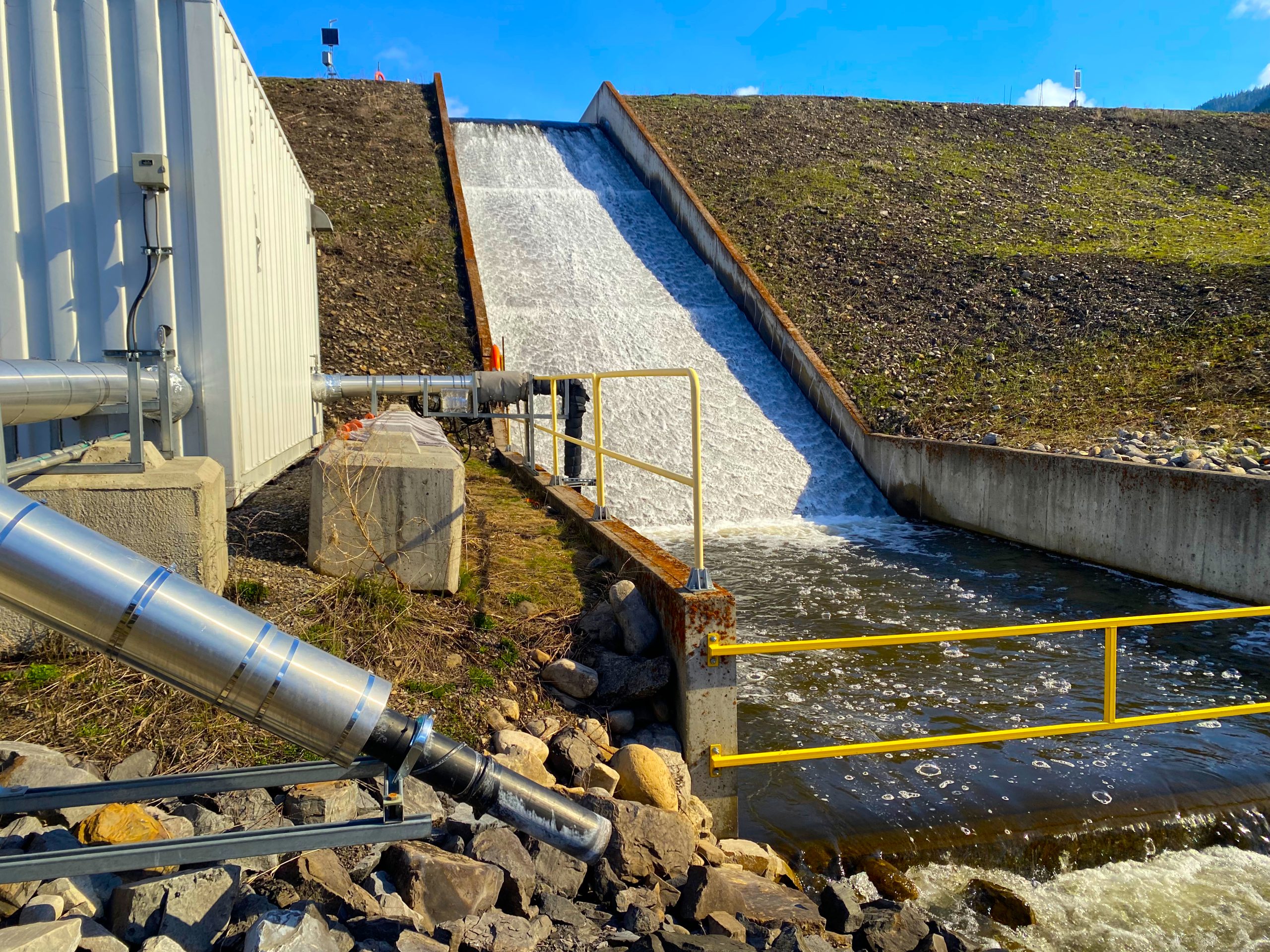On this page
- Elk Valley Water Quality Plan targets
- The science behind the targets
- How water quality targets were developed
- When targets are exceeded
Elk Valley Water Quality Plan targets
The Elk Valley Water Quality Plan establishes long-term targets for selenium, nitrate and sulphate levels in the Elk Valley. The water quality targets apply at locations throughout the Elk River watershed and in Koocanusa Reservoir.
The targets aim to stabilize and reduce amounts of these substance in the environment. This will improve water quality over time, while mining activities are underway.
Water quality targets are based on a variety of guidelines, site-specific science and timing:
- Some targets are set at levels equivalent to B.C.’s generic Water Quality Guidelines. The guidelines are ministry policy statements that represent low-risk conditions which are protective of all ecosystems and water uses province-wide. Targets which are based on these generic guidelines are shown in green text in the tables below.
- Other targets are based on information and scientific studies that are directly applicable to locations in the Elk Valley. These targets are designed to protect the specific ecosystems in specific locations.
- Some long-term targets came into effect immediately in 2014. Others (for selenium and nitrate at some locations) apply at a future date. These are indicated by the years listed in brackets in the tables below.
- When the long-term targets are not immediately applicable, short and/or medium-term targets are established. These targets guide the implementation of water treatment and other measures to improve water quality.
All long-term targets are expected to protect overall ecosystems in the Elk Valley.
Selenium targets (µg/L)
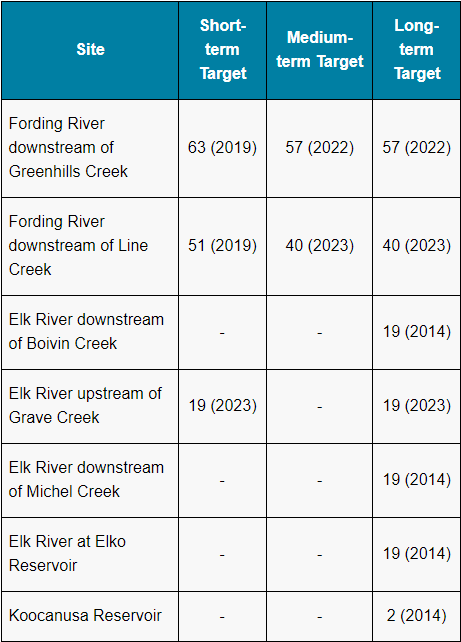
Nitrate targets (µg/L)
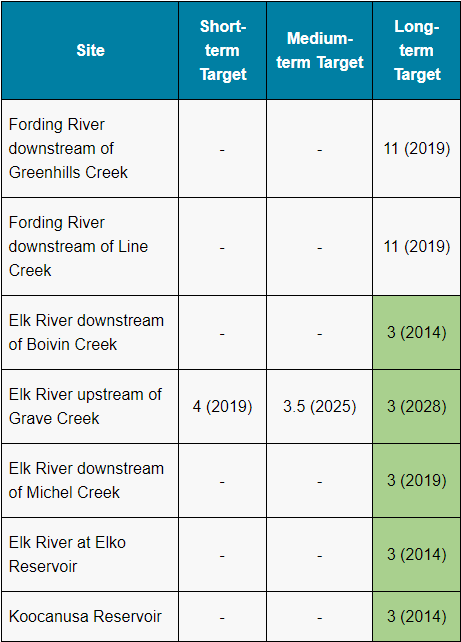
Sulphate targets (µg/L)

The science behind the targets
Selenium, nitrate and sulphate targets are based on 2 approaches:
- Where feasible, targets were set by adopting the very low-risk B.C. Water Quality Guidelines developed by the B.C. government.
- In other circumstances targets are set at levels that, through scientific study, showed a linkage with a specific type of impact on sensitive species inhabiting Elk valley waters. EVR refers to these levels as “benchmarks.” Relying on specific benchmarks provides an understanding of the risks and levels of protection that a specific target provides in the unique ecosystems of the Elk Valley.
Elk Valley benchmarks were developed by qualified professionals during the area-based management planning process. They were comprehensively reviewed by a Technical Advisory Committee, that included consultants and experts from governments, Ktunaxa Nation Council and academia.
Benchmarks provide a site-specific understanding of the risks and levels of protection specific targets will provide in the unique ecosystems of the Elk Valley.
If water quality was not already meeting B.C. Water Quality Guidelines benchmarks were developed by reviewing published scientific literature and carrying out controlled laboratory studies to determine the types of impacts that result when the most sensitive species in each specific area are exposed to different amounts of a substance.
By developing benchmarks using the most sensitive species, other species in the area are expected to experience a lower level of impact, or higher level of protection, than indicated by the benchmark.
Elk Valley benchmarks are expressed:
- As a percentage of effect for a specific measurement, for example 10% reduction in growth
- For a specific life stage, for example juvenile
- For a specific species, for example Westslope Cutthroat Trout
- A group of species, for example fish, amphibians, birds, or aquatic insects
Three levels of benchmarks are defined for each substance:
- Level 1 benchmarks: Substance concentrations that are expected to result in a 10% effect to a specific measurement (or endpoint) on populations of sensitive aquatic species. A 10% effect is barely detectable in a controlled laboratory setting but is not expected to be measurable in the environment because of interference with naturally occurring changes, for example, changes caused by weather.
- Level 2 benchmarks: Substance concentrations that are expected to result in a 20% effect to a specific measurement on populations of sensitive species. Low-level impacts may be measurable in the environment when substance concentrations are at, or above, Level 2 benchmarks.
- Level 3 benchmarks: Substance concentrations at which effects of up to 50% may be detected for a specific measurement on populations of sensitive species. The resulting impacts are expected to be measurable in monitoring programs, and changes may occur in the ecosystem.
Benchmark example
The Level 2 fish benchmark for selenium is 187 µg/L in the Fording River.
At this level, it’s possible there may be up to a 20% reduction in the amount of viable eggs laid by a Westslope Cutthroat Trout during spawning. This may or may not result in a measurable change to the trout population or the ecosystem. Westslope Cutthroat Trout were used to define the fish benchmark in the Fording River because they are the most sensitive fish species present.
In the Elk River, the Level 2 fish benchmark for selenium is 74 µg/L. This is lower than the benchmark in the Fording River because it is based on Brown Trout, which represent more sensitive species that live in the Elk River but are not present in the Fording River).
How water quality targets were developed
Targets were determined using a 3-step process:
1. Long-term targets identified
To achieve the goals of the Elk Valley Water Quality Plan, either B.C. Water Quality Guidelines or site-specific Level 1 benchmarks were selected as the long-term target at each location. These levels were chosen because they are not expected to result in any measurable impacts to the environment.
2. Timelines selected
To prevent further degradation, the selected long-term targets were applied immediately in areas where water quality was already near, or meeting the selected targets.
In some areas, long-term targets could not be achieved immediately. In these cases, EVR evaluated how water treatment and other measures could be applied to improve water quality. This information determined when the long-term targets would come into effect.
3. Interim targets established
In areas where the long-term targets will take time to be met, short and medium-term targets were established to guide implementation of the Elk Valley Water Quality Plan. These interim targets aim to drive improvement towards meeting the long-term targets.
The timelines for when the short and medium-term targets apply were based on best available information about how quickly water treatment and other measures could be put in place.
Targets in the Fording River
The Fording River downstream of Line Creek is the only place in the watershed where the long-term targets exceed the Level 1 benchmark for selenium and nitrate. This is because there aren’t currently feasible strategies to achieve a more protective target. Even though the established long-term targets are above a Level 1 benchmark, potential impacts are expected to be low.
Because of the higher level of risk in this area, comprehensive monitoring and assessment programs have been put in place to evaluate how the ecosystem is responding to elevated levels of mining-related substances. The targets will be reviewed in the future as new information is available and treatment technologies evolve.
Implementing the targets
Once the Elk Valley Water Quality Plan was approved, the proposed targets were included in Permit 107517 to make them legally enforceable requirements, called Site Performance Objectives. Site Performance Objectives are legal limits that apply at 7 locations in the watershed.
Meeting the targets
EVR developed water treatment strategies and other measures to achieve the permit limits. EVR is now implementing these measures. EVR has made progress towards meeting the limits, but in some locations water quality limits are not currently met.
In some locations, it’s taking longer than anticipated to implement treatment. This is because EVR is developing brand new treatment technologies. As the new technology is implemented, EVR is adjusting their approach so that the treatment facilities are working effectively.
Adjustments are due to several factors:
- New data and updated water quality modelling is improving understanding of how substances are released from the mines.
- New studies also show that substances move through groundwater and surface water a little differently than predicted.
- The timelines originally set for the targets did not take this new information into account. EVR is adjusting their treatment strategies to address these differences.
Despite the new information, the B.C. government has not adjusted any of EVR’s limits. Instead, B.C. is working to make sure EVR is doing everything possible to meet the existing water quality limits as soon as possible. Learn more about compliance and enforcement.
When targets are exceeded
Substances pose a higher risk of impacting aquatic life when their amounts exceed permit limits. Exceedance of a limit does not indicate that an impact has occurred, or will occur, but does indicate a higher risk of an impact.
When assessing the potential impact when a permit limit is exceeded biologists must consider several factors, including:
- Limits: Limits in the Elk Valley are based on guidelines or site-specific benchmarks. Water Quality Guideline levels are conservative, protective and designed to avoid impacts to sensitive species in B.C. Minor exceedances of guidelines are unlikely to result in impacts. Exceedance of a limit that is set at a benchmark level, pose a higher risk of impact.
- Magnitude: Generally, low level, occasional (e.g., seasonal) exceedances are lower risk than regular, ongoing, extended duration exceedances that surpass the limit by a large margin Consideration of the magnitude or degree of the limit exceedance is important in determining the risk of impact.
- Location: In certain circumstances, multiple stressors may contribute to greater than expected impacts. Consideration of where the limit exceedance is occurring is important. The presence of other stressors (e.g., habitat loss, low flow) may worsen impacts from a substance exceeding a limit.
Aquatic Effects Monitoring Programs are used to draw conclusions about actual impacts to organisms and ecosystems. These programs are designed to detect and measure impacts to organisms like aquatic insects or fish.
EVR is required to undertake extensive aquatic effects monitoring. These programs observe if an ecosystem is responding in a way that is consistent with the scientific studies and predictions behind the water quality targets. Any unusual or unexplained results are assessed using specific studies as part of EVR’s Adaptive Management Plan so that informed actions can be taken to address issues.




